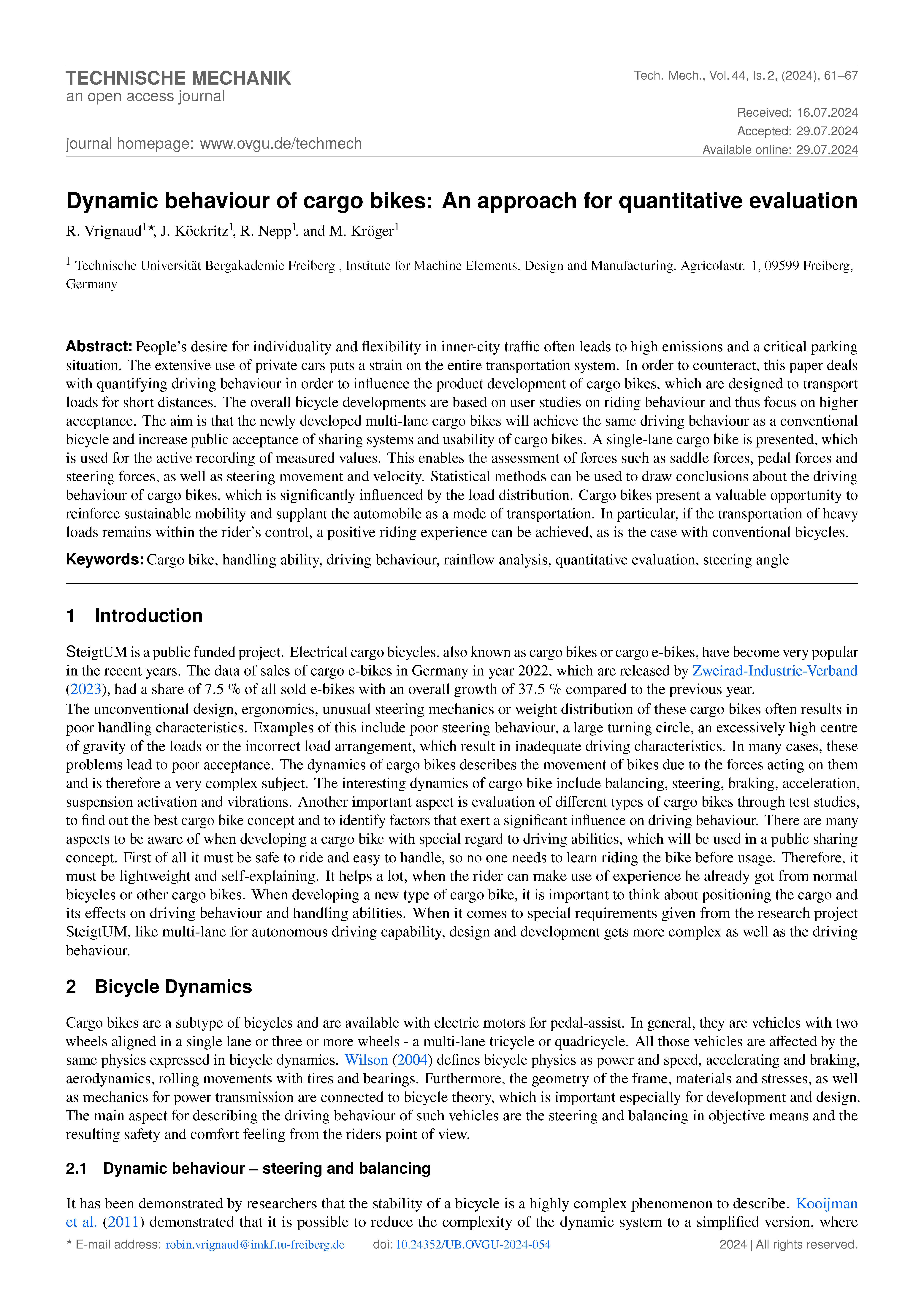Dynamic behaviour of cargo bikes: An approach for quantitative evaluation
DOI:
https://doi.org/10.24352/UB.OVGU-2024-054Keywords:
cargo bike, handling ability, driving behaviour, rainflow analysis, quantitative evaluation, steering angleAbstract
People’s desire for individuality and flexibility in inner-city traffic often leads to high emissions and a critical parking situation. The extensive use of private cars puts a strain on the entire transportation system. In order to counteract, this paper deals with quantifying driving behaviour in order to influence the product development of cargo bikes, which are designed to transport
loads for short distances. The overall bicycle developments are based on user studies on riding behaviour and thus focus on higher acceptance. The aim is that the newly developed multi-lane cargo bikes will achieve the same driving behaviour as a conventional bicycle and increase public acceptance of sharing systems and usability of cargo bikes. A single-lane cargo bike is presented, which is used for the active recording of measured values. This enables the assessment of forces such as saddle forces, pedal forces and steering forces, as well as steering movement and velocity. Statistical methods can be used to draw conclusions about the driving behaviour of cargo bikes, which is significantly influenced by the load distribution. Cargo bikes present a valuable opportunity to reinforce sustainable mobility and supplant the automobile as a mode of transportation. In particular, if the transportation of heavy loads remains within the rider’s control, a positive riding experience can be achieved, as is the case with conventional bicycles.

Downloads
Published
How to Cite
Issue
Section
License
Copyright (c) 2024 Robin Vrignaud, Jenny Köckritz, Ringo Nepp, Matthias Kröger

This work is licensed under a Creative Commons Attribution-ShareAlike 4.0 International License.




